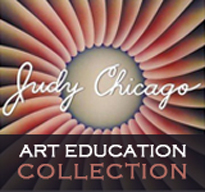Forum Replies Created
-
AuthorPosts
-
October 3, 2014 at 1:32 pm in reply to: 2. Is emphasis on content and finding personal voice important? #4017
meganbourne
ParticipantWell, that transition is very difficult to make, especially for a student that has been a student since they were five years old, or even younger than that. I know when my senior year of undergraduate work came around, I was given more freedom, not only to choose my content, but to choose how much work I would produce, the medium in which I worked in, and so forth. I was still given a time frame, however. I chose to look at this as my transition point, almost like a practice round for hanging my own show before I was put out into the real world to try to “make it on my own”. I feel like this experience helped me not only discover my own voice, but it helped me to stand up for and believe in my work, and state my independence as not only an artist, but an adult.
Many students, in my personal experience, go through this “what now” moment when they are either coming to the end of their degree or have just graduated. I feel that, especially in the last year of study, students need to be given practical guidance and PRACTICE (or some type of simulation) in a structured, caring environment full of people who will help and support them, so they can get a feel for how the real world artist experience is going to be without being afraid to make mistakes. It seems to be hard to find your voice on your own and make that voice into art, which is why I feel that teachers should stress personal expression in content right off the bat. But after school is over, and you can technically express yourself any way you want to, I feel that there still needs to be structure in art making, at least as far as time is involved.
I like to think that ideally, one could just replace the word “assignment” with “personal goal” and that changes the mindset of the artist from “student” to “artist”. If an artist plans on ever exhibiting work, they have a deadline to make to be able to put their work in a show. This seems to be similar to having a final portfolio deadline, in my opinion. If an artist were to set their own time frame to get a certain amount of work completed to show in an exhibition, it seems like it would be similar to a student setting up their own time frame to get a certain amount of work done to show in their portfolio review. It may not be as simple as changing out words, but if students are given the right mindset in the first place, the transition may not seem so bad.
September 29, 2014 at 8:45 pm in reply to: 2. Is emphasis on content and finding personal voice important? #4014meganbourne
ParticipantIn my personal experience, I feel that the studio classes I took in my undergraduate program helped me with finding my voice as far as content was concerned, but not before I learned the importance of the formal aspects of art making. I feel very strongly about eventually letting the student’s voice be the main concern of the student/teacher conversation, but there are also things that need to be taught before-hand in order for the student to properly portray their voice. Color theory and 2D design are two major concepts that I learned that didn’t necessarily help to give me a voice in the design projects I was working on at the time, but the concepts that I learned helped me to express what I wanted to in my art making later on in a sophisticated way.
While, in theory, I feel that a gender-neutral, content-based curriculum would be great for studio art classes, it would be hard to implement such a curriculum so abruptly. Such a change in the curriculum would take time, especially where faculty and text/learning material is concerned. I feel that students first coming into a studio art program are ready to be open-minded, empty vessels that are just waiting to be filled with knowledge and experience. The teachers, however, are using a curriculum that is male-oriented (whether they realize it or not), and currently it is up to them to change the subject matter of their teaching to one that equally incorporates artists of all genders, races, nationalities, and so forth.
As far as helping a student “find their voice” is concerned, what is the point of teaching a studio class if not to help people express themselves through artistic means? It blows my mind that students may not be given a choice as to what subject matter they choose to have in their work, after they have basically grasped the concepts of color and design. Although I agree that formal aspects of art making are very important, the content of a work is equally important, and students need to know that. As educators of (hopefully) future artists, you have to take the student’s idea(s) and help the student to formulate them into a cohesive, sophisticated body of work that has meaning and purpose.
-
AuthorPosts
